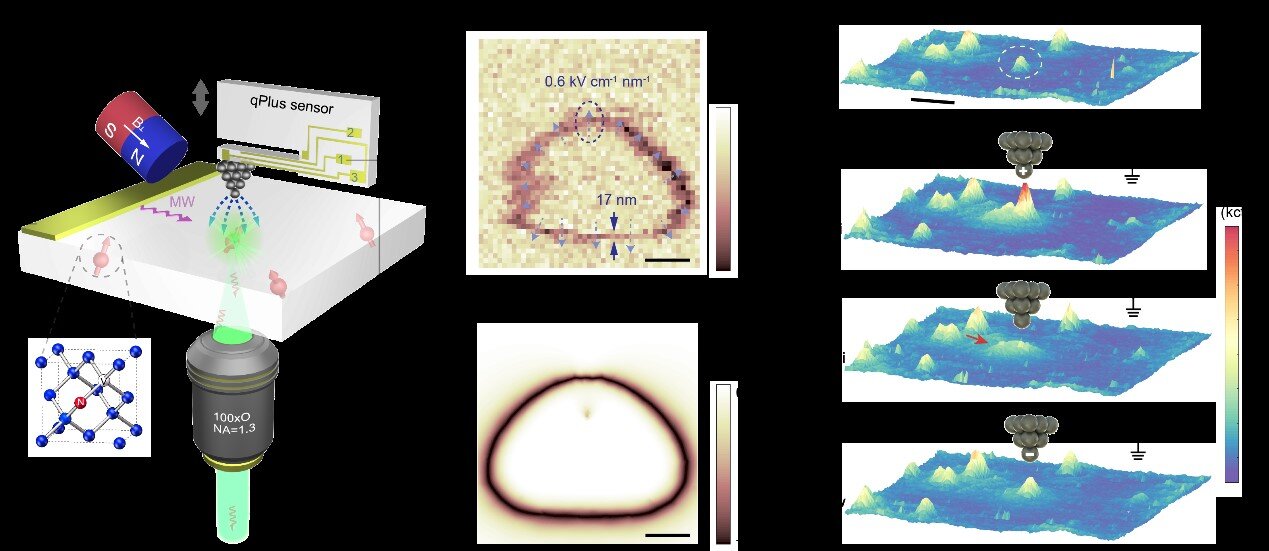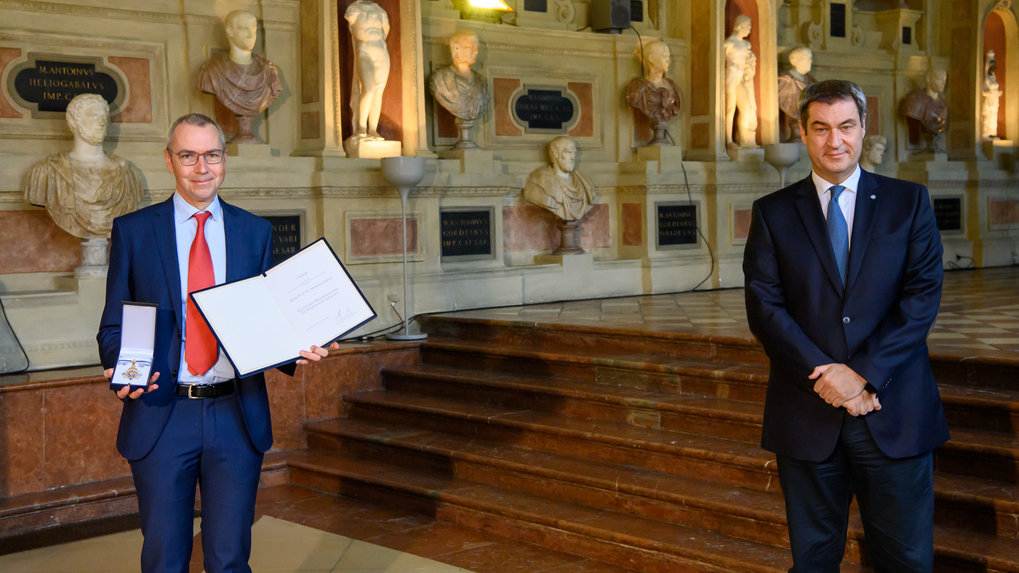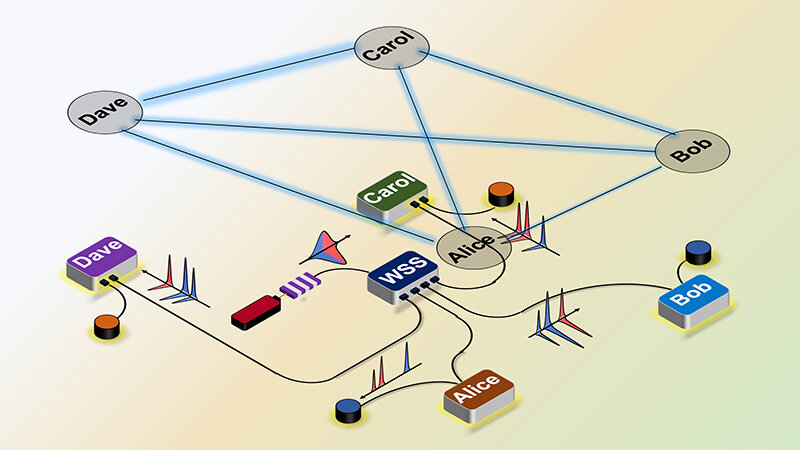Researchers at Peking University have developed a scanning quantum sensing microscope by using a solid-state qubit, Nitrogen-Vacancy (NV) center, as the quantum sensor. They have, for the first time, realized NV-based nanoscale electric-field imaging and its charge-state control, demonstrating the possibility of scanning NV electrometry.
The NV has been applied as a powerful quantum sensor for detecting subtle magnetic/electric signals in a quantitative manner, based on monitoring the coherent evolution of its quantum state during its interaction with the surrounding environment. Since the NV has long coherence time up to ~ms even under ambient condition, the sensitivity of NV is exceptionally high, even allowing to detect single nuclear/electron spin. By integrating the shallow NV with scanning probe microscope (SPM), one can construct scanning magnetometry and realize quantitative magnetic imaging at nanoscale. However, the nanoscale electric-field mapping has not been achieved so far because of the relatively weak coupling strength between NV and the electric field, leading to the stringent requirements on both the coherence of shallow NV and the stability of SPM system.
Recently, the team has developed a new-generation qPlus-based atomic force microscope (AFM), which pushes the resolution and sensitivity of SPM to the classical limit and allows the direct imaging of hydrogen atom in water molecules. On this basis, this group integrated the NV-based quantum sensing technology into a qPlus-based SPM system, resulting in the so-called scanning quantum sensing microscope. Due to the ultrahigh stability of qPlus sensor, it can work with very small amplitude (~100 pm) at a close tip-surface distance of ~1 nm, which is critical to maintain the good coherence and resolution of shallow NV. Using the single shallow NV, the team was able to map the local electric field from a biased metal tip with a spatial resolution of ~10 nm and a sensitivity close to an elementary charge. In the future, this technique can be applied for investigating the local charge, polarization and dielectric response of the functional materials from a microscopic view.
Using this new system, the team also realized the reversible control of single NV’s charge states (NVˉ, NV+ and NV0), where NVˉ is used as the quantum sensor, while NV+ and NV0 are basic building blocks of quantum storage for improving the signal-to-noise ratio of quantum sensing. The researchers found that, with the assistance of the photon ionization by the excitation laser, the local electric field of a sharp biased tip can be applied to achieve the local polarization/depolarization of the diamond surface and induce the charge-state switch of NV with nanoscale accuracy (down to 4.6 nm). This finding will help to purify NV’s immediate electrostatic environment, enhance the NV coherence and build up NV-based quantum networks. (Phys.org)
This work has been published in Nature Communications.




